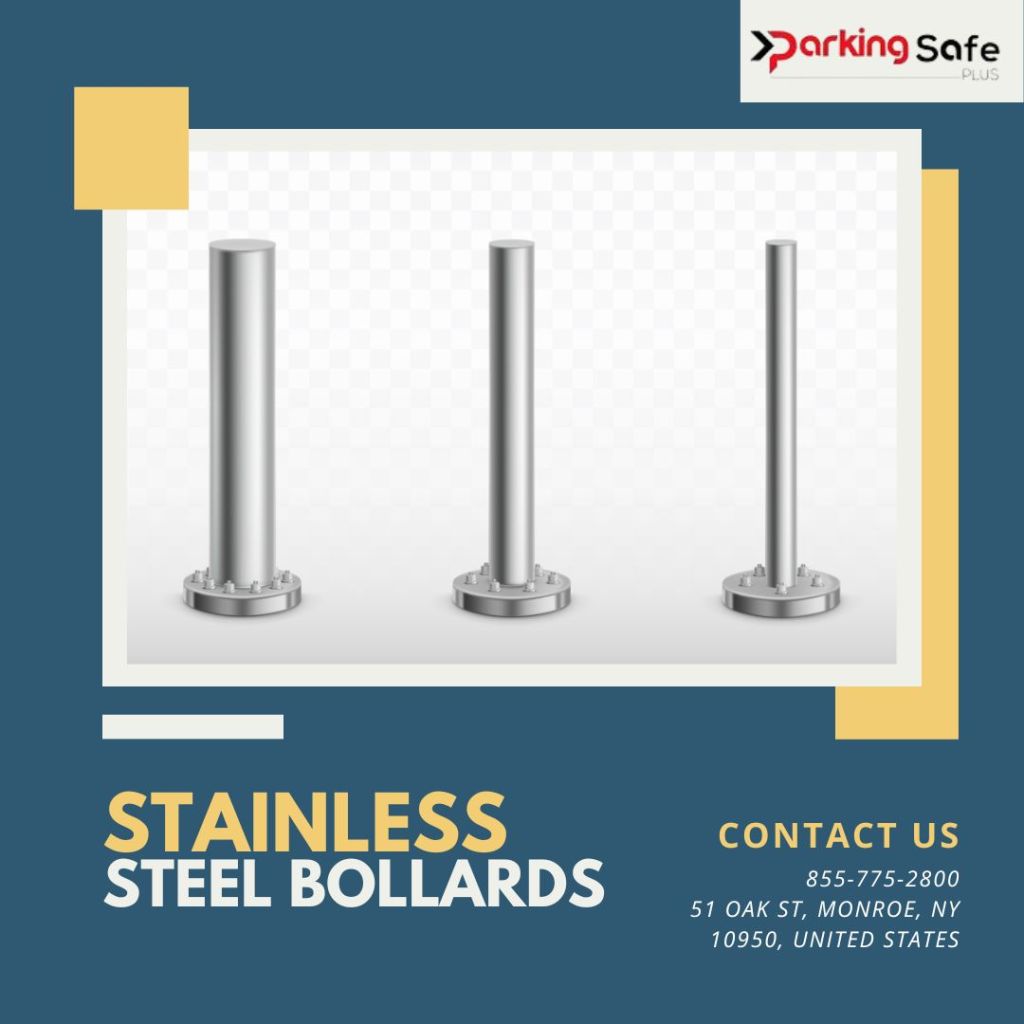Stainless steel bollards are a common sight in many urban environments, serving a multitude of purposes beyond their aesthetic appeal. These sturdy, upright posts are made from stainless steel, a material known for its stability and resistance to corrosion. While stainless steel bollards are often chosen for their aesthetic qualities, they also offer a range of security benefits that make them a valuable addition to various settings.

What are stainless steel bollards?
Stainless steel bollards have gained popularity in recent years due to their exceptional corrosion resistance, longevity, and ability to withstand various environmental conditions. Stainless steel, a metal alloy primarily composed of iron, chromium, and nickel, offers these advantageous properties. Chromium forms a protecting oxide layer on the surface of the steel, preventing rust and corrosion, while nickel enhances its overall strength and durability. These qualities make stainless steel bollards an ideal choice for both decorative and functional purposes.
What are stainless steel bollards used for?
Stainless steel bollards serve a wide range of functional and aesthetic purposes in various industries and settings. These sturdy and durable posts are typically made from stainless steel, a corrosion-resistant material known for its strength and longevity. Stainless steel bollards find applications in different sectors, including traffic management, security, and architectural design.
The primary use of stainless steel bollards is traffic management and safety. They help to define traffic lanes, prevent vehicles from encroaching on restricted areas, and enhance pedestrian safety. For instance, you might find stainless steel bollards lining the perimeter of a parking lot to prevent vehicles from inadvertently driving onto sidewalks or green spaces. In this context, they serve as protective barriers that can absorb impact in accidents, minimizing damage to vehicles and property.
Stainless steel bollards also play a crucial role in protecting buildings and infrastructure from accidental vehicle collisions and deliberate attacks. In high-security locations such as embassies, government buildings, and corporate headquarters, anti-ram stainless steel bollards are used to safeguard against vehicle-borne threats like car bombings or ramming attacks. These bollards are engineered to absorb and redirect the energy of a moving vehicle, preventing it from reaching its intended target and mitigating the potential for catastrophic damage.
They can be integrated into urban design and landscape planning to enhance the visual appeal of public spaces. Stainless steel bollards come in various styles and finishes, making them suitable for both modern and traditional architectural settings. They can be used to define pedestrian plazas, create aesthetically pleasing pathways, or add a touch of sophistication to outdoor spaces.
How much does a metal bollard cost?
To determine the cost of a metal bollard, you need to consider factors such as the type of metal, the size and design of the bollard, installation requirements, and any additional features or customization.
- Type of Metal: The type of metal used for the bollard plays a significant role in determining its cost. Common materials for metal bollards include steel, stainless steel, and aluminum. Steel bollards are generally more affordable than stainless steel, which is known for its erosion resistance and durability. Aluminum bollards are often used where corrosion is a concern and can be more expensive than steel.
- Size and Design: The design and size of the bollard also impact its cost. Standard-sized bollards are typically more affordable than custom-designed ones. Bollards come in various diameters, heights, and shapes to suit different applications. Intricate or decorative designs may add to the cost because of the additional labor and materials required for fabrication.
- Finish and Coating: The finish and coating of the metal bollard can affect its cost. Bollards can be left with a natural finish, often the most cost-effective option. However, many bollards are coated or painted to enhance their look and protect them from corrosion. Powder coating, galvanizing, or specialized paint finishes can add to the cost.
- Installation: The cost of installation is a significant consideration. Factors that influence installation costs include the location of the bollard, the type of surface it will be mounted on (concrete, asphalt, soil, etc.), and whether excavation or specialized equipment is required. Complex installations may require the services of a professional contractor, which can increase the overall cost.
- Quantity: Purchasing multiple bollards at once can sometimes lead to cost savings. Suppliers may offer volume discounts for large orders, which can help reduce the per-unit cost of each bollard. Additionally, shipping costs may be more costeffective when ordering in bulk.
Conclusion
Stainless steel bollards are a valuable investment for anyone looking to enhance safety, security, and aesthetics in their surroundings. Their durability and resistance to corrosion ensure they provide long-lasting benefits, making them a cost-effective choice in the long run. Whether you need traffic management solutions, security measures, or a touch of sophistication in your architectural design, stainless steel bollards offer a complete package of utility and visual appeal.Their ability to combine functionality and aesthetics makes them a valuable asset in modern urban and industrial landscapes.